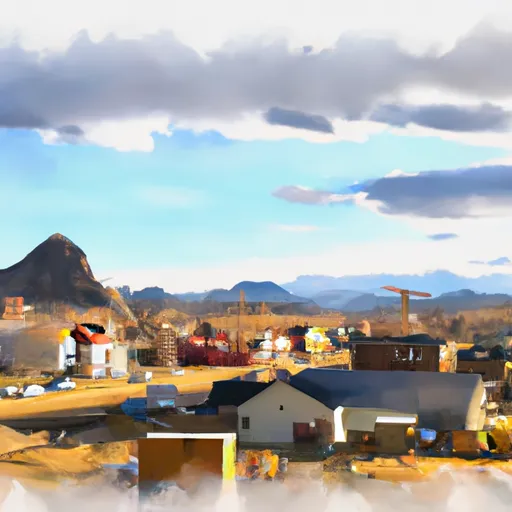-
 Snoflo Premium
Snoflo Premium
Get unlimited access to all our content
With no Ad interruptions! - Start Your Free Trial Login with existing account
Lewis
Eden Index
Climate
8.4
•
Recreation
8.2
•
Community
•
Safeguard
6.2/10

Lewis, Colorado is a small town located in Montezuma County, in the southwestern part of the state. The town is situated at an elevation of approximately 6,500 feet, offering a mild and pleasant climate throughout the year. Summers are warm and dry, with temperatures ranging from the mid-70s to the low 90s°F. Winters are generally mild, with temperatures averaging in the 30s to 40s°F. The area receives around 15 inches of precipitation annually, with most of it occurring during the summer months.
Hydrologically, Lewis is located near the Dolores River and McPhee Reservoir. The Dolores River provides opportunities for water-based recreation, including fishing, boating, and rafting. McPhee Reservoir, located about 10 miles from Lewis, offers additional opportunities for fishing and boating, with various species of fish, including trout, bass, and kokanee salmon.
Outdoor enthusiasts will find plenty of recreational opportunities in Lewis and the surrounding area. The nearby San Juan National Forest offers hiking, camping, mountain biking, and wildlife watching. Additionally, there are several scenic driving routes, such as the San Juan Skyway, which provides stunning views of the surrounding mountains and forests.
What is the Eden Index?
The Snoflo Eden Index serves as a comprehensive rating system for regions, evaluating their desirability through a holistic assessment of climate health, outdoor recreation opportunities, and natural disaster risk, acknowledging the profound impact of these factors on livability and well-being.
Climate Health Indicator (CHI): 8.4
Lewis receives approximately
410mm of rain per year,
with humidity levels near 63%
and air temperatures averaging around
9°C.
Lewis has a plant hardyness factor of
6, meaning
plants and agriculture in this region thrive during a short period during spring and early summer. Most
plants will die off during the colder winter months.
By considering the ideal temperature range, reliable water supplies, clean air, and stable seasonal rain or snowpacks, the Climate Health Indicator (CHI) underscores the significance of a healthy climate as the foundation for quality living.
A healthy climate is paramount for ensuring a high quality of life and livability in a region, fostering both physical well-being and environmental harmony. This can be characterized by ideal temperatures, reliable access to water supplies, clean air, and consistent seasonal rain or snowpacks.
Weather Forecast
Streamflow Conditions
Lower San Juan
Area Rivers
Lower San Juan
Snowpack Depths
Lower San Juan
Reservoir Storage Capacity
Lower San Juan
Groundwater Levels
Recreational Opportunity Index (ROI): 8.2
The Recreational Opportunity Index (ROI) recognizes the value of outdoor recreational options, such as parks, hiking trails, camping sites, and fishing spots, while acknowledging that climate plays a pivotal role in ensuring the comfort and consistency of these experiences.
Access to outdoor recreational opportunities, encompassing activities such as parks, hiking, camping, and fishing, is crucial for overall well-being, and the climate plays a pivotal role in enabling and enhancing these experiences, ensuring that individuals can engage in nature-based activities comfortably and consistently.
Camping Areas
| Campground | Campsites | Reservations | Toilets | Showers | Elevation |
|---|---|---|---|---|---|
| Ferris Canyon | 7 | 6,566 ft | |||
| Mountain Sheep Point Dispersed | None | 6,091 ft | |||
| House Creek | 65 | 6,948 ft | |||
| Cabin Canyon | 11 | 6,518 ft | |||
| Mcphee | 71 | 7,158 ft | |||
| Bradfield | 22 | 6,474 ft |
Nearby Fishing
Catastrophe Safeguard Index (CSI):
The Catastrophe Safeguard Index (CSI) recognizes that natural disaster risk, encompassing floods, fires, hurricanes, and tornadoes, can drastically affect safety and the overall appeal of an area.
The level of natural disaster risk in a region significantly affects safety and the overall livability, with climate change amplifying these risks by potentially increasing the frequency and intensity of events like floods, fires, hurricanes, and tornadoes, thereby posing substantial challenges to community resilience and well-being.
Community Resilience Indicator (CRI):
The Community Resilience Indicator (CRI) recognizes that education, healthcare, and socioeconomics are crucial to the well-being of a region. The CRI acknowledges the profound impact of these elements on residents' overall quality of life. By evaluating educational resources, healthcare accessibility, and economic inclusivity, the index captures the essential aspects that contribute to a thriving community, fostering resident satisfaction, equity, and social cohesion.

